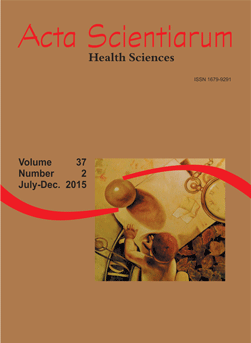<b>Effectiveness of exclusive self-monitoring of fasting capillary blood glucose in the treatment of diabetes
Resumo
The study aims to analyze the efficacy of the exclusive self-monitoring of the fasting capillary blood glucose in the control and treatment of diabetic patients. This is a quasi-experimental study, for which five individuals with diabetes were selected, who perform only the fasting capillary blood glucose monitoring, being added about seven other measurements, a variable number according to the individual availability of the volunteer, at different times throughout the day. It was verified that four individuals presented blood glucose values by the use of the fasting capillary blood glucose monitoring, within the parameters of normality for diabetics, between 70-130 mg dL-1 of blood (ADA, 2014b), although in the other measurements, they presented values far from the ideal goal, in a significant part of the time. The study outlines a trend that shows that the glycemic monitoring values based solely on the fasting capillary blood glucose is ineffective, since they can erroneously indicate satisfactory control of the blood glucose levels. Based on the results obtained, to a more effective monitoring and which denotes levels of reliability, it is required at least three measurements of capillary blood glucose throughout the day, and also, the importance of long laboratory tests for glycemic monitoring, such as glycated hemoglobin.
Downloads
DECLARAÇÃO DE ORIGINALIDADE E DIREITOS AUTORAIS
Declaro que o presente artigo é original, não tendo sido submetido à publicação em qualquer outro periódico nacional ou internacional, quer seja em parte ou em sua totalidade.
Os direitos autorais pertencem exclusivamente aos autores. Os direitos de licenciamento utilizados pelo periódico é a licença Creative Commons Attribution 4.0 (CC BY 4.0): são permitidos o acompartilhamento (cópia e distribuição do material em qualqer meio ou formato) e adaptação (remix, transformação e criação de material a partir do conteúdo assim licenciado para quaisquer fins, inclusive comerciais.
Recomenda-se a leitura desse link para maiores informações sobre o tema: fornecimento de créditos e referências de forma correta, entre outros detalhes cruciais para uso adequado do material licenciado.























5.png)







